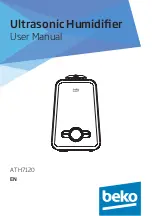
5
Electrical wiring
5.1 General notes
n
The devices are operated with 220-240 V/50
Hz alternating current
n
The electrical connection is made using a built-
in mains cable with earthed safety plug
n
Extensions to the connection cable may only
be carried out by authorised electricians, sub-
ject to the length of the cable, connected load
of the unit and taking into consideration how
the unit is used at its location
WARNING!
The electrical connection to the units must be
made at feed-points with residual current
devices in accordance with VDE 0100, Section
704. When installing the units in extremely
damp environments such as laundry rooms,
showers etc., the unit must secured with a
residual current device provided by the cus-
tomer in accordance with the regulations.
CAUTION!
All cable extensions must only be used in fully
un-reeled or reeled off condition.
5.2 Electrical wiring diagram
L N PE
C
N
21
W
C
TI
L
D
IN
1
D
IN
2
D
IN
3
D
IN
4
D
IN
5
SW1
JP1
CN19
OUT5
OUT4
OUT3
CON SW
BAG +12V CN12
AIN1
AIN2
AIN3
AIN4
AIN5
AIN6
AIN7
AIN8
CN24
CL
OUT1A
OUT1
AC-L
T5A/250V
AC-N
MDRV
DCFM
DCHV
ACOUT 1
ACIN 1
ACIN2
ACOUT2
FUSE002
CN3
W
V
U
CN1
CN6
AC1
LA
AC2
LB
SP
CM
DC
FM
PE
A2
A4
A5
A6
A7
A8
EV
D5
D4
DP
PFC
PCB
IVB
Fig. 6: Electrical wiring diagram
A2 (brown): Air outlet sensor
A4 (green): Vaporiser sensor
A5 (red):
Hot gas sensor
A6 (black): Suction gas sensor
A7 (yellow): Room temperature sensor
A8 (white): Humidity probe
CM:
Compressor
D4:
Low pressure switch
D5:
High pressure switch
DC FM:
Fan motor
DP:
Display
EV:
Expansion valve
SP:
Choke
IVB:
Inverter board
PCB:
Control board
PFC:
Wave-trap
We reserve the right to modify the dimensions and design as part of the ongoing technical development
process.
REMKO ETF-S Series
14














































